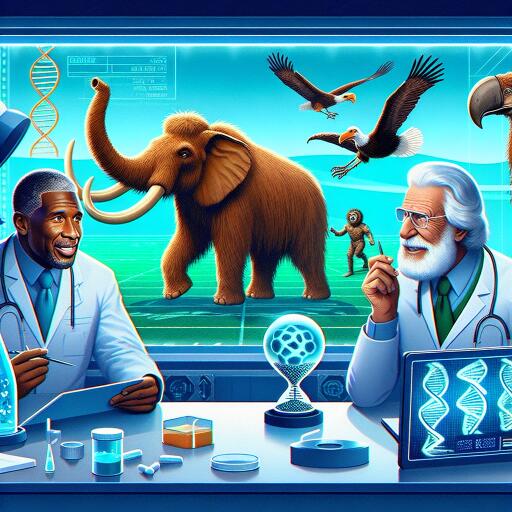
Tom Brady and Tiger Woods Team Up on an Incredible Project to Recover Extinct Animals Such as the Mammoth and the Dodo: Is It Possible?
A revolutionary scientific initiative to return extinct species to the planet has gained high-profile support from legendary sports figures Tom Brady and Tiger Woods, in collaboration with Colossal Biosciences. This biotechnology firm, renowned for its work in de-extinction, is working on restoring iconic species such as the woolly mammoth, the dodo bird, and the Tasmanian tiger.
The involvement of such famous personalities brings significant public attention to the growing field of genetic engineering and the revival of extinct species.
Colossal Biosciences, which was co-founded by the esteemed geneticist George Church and visionary entrepreneur Ben Lamm, is blazing a trail in the world of de-extinction.
The company utilizes advanced CRISPR gene-editing technology to integrate DNA from extinct animals into the genomes of their closest extant relatives. The woolly mammoth project, a hallmark of these efforts, involves modifying the DNA of Asian elephants, which share 99.6 percent of their genetic material with the mammoth, with the aim of recreating the ancient creature.
Similarly, researchers are attempting to bring back the dodo bird by altering the genes of the Nicobar pigeon, its nearest living relative.
The recent decision by Brady and Woods to invest in Colossal Biosciences highlights an intriguing trend among celebrities who support technological innovation and environmental conservation.
For Brady, engaging in a pioneering scientific venture complements his keen interest in innovation. Meanwhile, Woods, widely known for his philanthropic activities across various sectors, is utilizing his influence to champion the advancement of biotechnology.
Both their financial support and public advocacy not only boost Colossal’s funding but also elevate the profile of de-extinction as a credible scientific pursuit. With a growing cohort of investors and researchers striving to bring extinct species back, the vision of woolly mammoths once again roaming the earth is edging closer to reality.
Despite these ambitious endeavors, the idea of de-extinction is steeped in controversy. Numerous conservationists and scientists question the wisdom of reintroducing species long absent from modern ecosystems.
Detractors argue that resurrecting extinct creatures could lead to unintended ecological consequences, particularly in environments that have adjusted to their absence. Additionally, some suggest that resources allocated to de-extinction might be better used to conserve species currently facing extinction.
As this exciting intersection between technology and ecology unfolds, time will reveal if efforts to restore extinct species will succeed without disrupting established ecosystems. The involvement of high-profile figures such as Brady and Woods ensures that the conversation about the potential and pitfalls of de-extinction will continue to captivate public and scientific discourse alike.





Leave a Reply